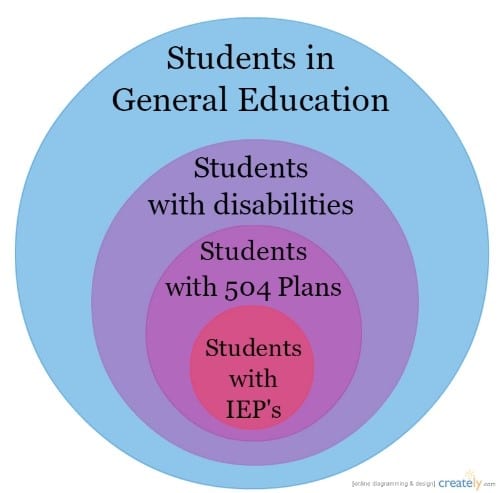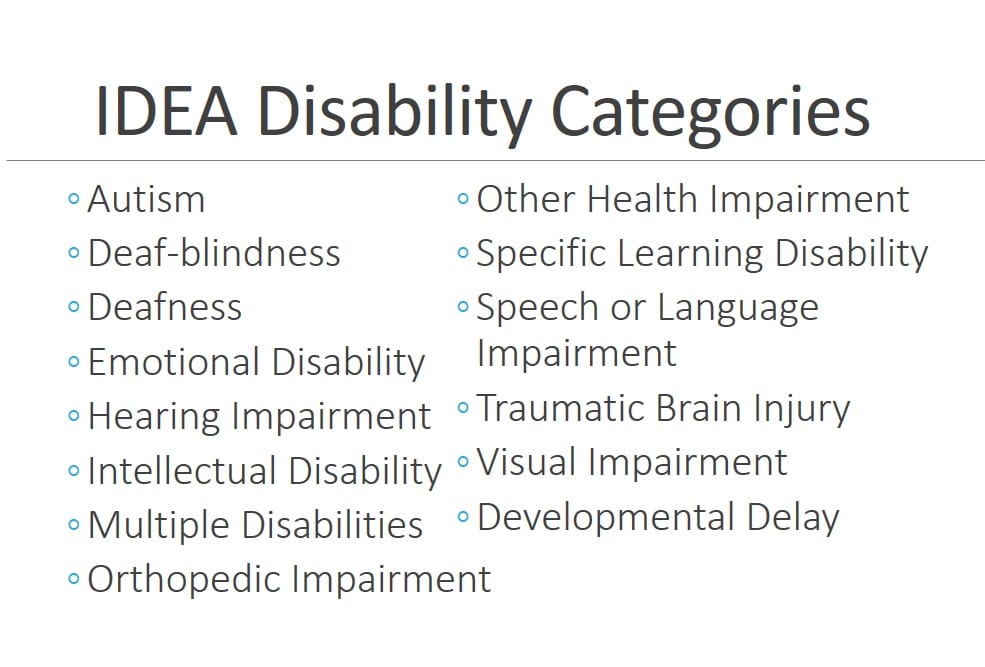504 Accommodation Plans vs. Individualized Education Programs (IEP)

In the public education system, there are many ways to help a child succeed. If a student has a special need or is not succeeding in school, there are options available to parents which vary by states and school systems. If a child has a disability or you suspect the child has a disability, there are two options all public school systems must make available.
504 Accommodation Plans
504 plans are set in place by a school to help level the playing field between students with disabilities and students without disabilities. The Americans with Disabilities Act (ADA) is a federal civil rights law that prohibits discrimination against individuals with disabilities. ADA and the Section 504 of the Rehabilitation Act of 1973 require public schools to provide accommodations for students with disabilities in K-12 education. Under Section 504, students are granted accommodations to help them achieve the same tasks as their classmates. These services will not change what is expected from the student, but they will accommodate the assignments so that the student can complete them.
Eligibility under Section 504
Section 504 describes eligible students as, “(1) Handicapped persons means any person who (i) has a physical or mental impairment which substantially limits one or more major life activities, (ii) has a record of such an impairment, or (iii) is regarded as having such an impairment.” In order to receive accommodations under Section 504, the student’s disability must substantially hinder the child’s educational growth in one or more areas. Once a student is referred to a 504 team, the 504 team will look at data and evaluations of the student to determine if a 504 plan is necessary. If a student is determined eligible for a 504 plan, the plan is written by the team which includes the parent.
Individual Education Programs
An Individualized Education Program (IEP) is a legal document that is written by a team of school system staff and the parents. IEP’s are written in accordance with the mandates of the Individuals with Disabilities Education Act (IDEA).

Determining Eligibility
To begin the process of determining if a child requires an IEP, school staff and parents determine the evaluations needed evaluate whether the student has an educational disability and whether the student requires special education services. Evaluations are conducted by the school, but parents can commission their own independent evaluations at their own expense. Evaluations are completed by professionals with experience in the areas the child’s suspected disability. Classroom observations, standardized testing, and examinations of skills in question will be conducted to ensure the evaluators and IEP team know the exact areas in question. The evaluators present the evaluation results in an IEP meeting. If the evaluation shows the child has an educational disability and requires specially designed instruction, the IEP team will draft an IEP for the child to receive special education services.
IEP Meeting
An IEP meeting will be convened to draft a set of goals for the child to attain. It includes the services the school will provide in order to reach those goals and a tangible way for the student to demonstrate progress. The parties that makeup the meeting are the parent(s), a general education teacher of the child, a school district representative, a special education teacher, someone able to interpret evaluation results, if the child is of appropriate age they may be on the team along with any other guest invited by the parents or school officials who offers special knowledge of expertise regarding the student.
Free Appropriate Public Education (FAPE)
The local school system is responsible to provide a FAPE to all students in their district age 3-21 years old. FAPE means the school system is responsible to provide “some educational benefit” to children with special needs in the district while also ensuring they are in the “least restrictive environment.”
504 plans and IEP’s can have overlapping techniques for helping students learn, but in the end the goals and services available through these two documents are different. IEPs provide students with individualized, specially designed instruction to meet the individual student’s goals. 504 plans provide accommodations to assist individual students to access the general curriculum. For more information on 504 plans, IEP’s, or for consultation for your child’s needs at school please contact the Law Office of Brian K. Gruber, PC.

